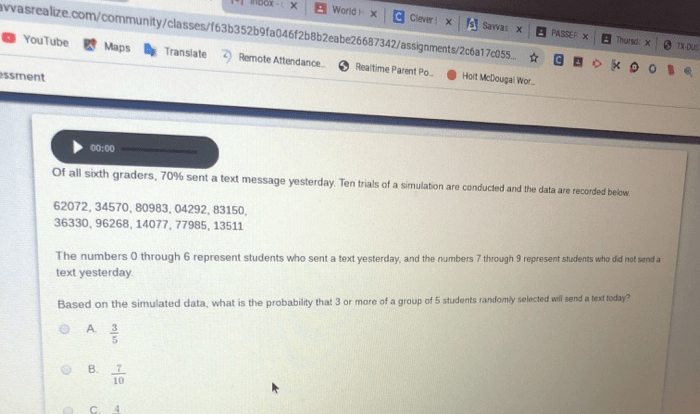Embark on a journey of geometric mastery with the Geometry Leap 2025 Practice Test, a comprehensive tool designed to elevate your understanding and prepare you for success. Delve into the intricacies of geometry and conquer your mathematical challenges with this engaging and informative practice test.
The Geometry Leap 2025 Practice Test is meticulously crafted to provide you with a thorough review of essential geometry concepts, empowering you to excel in your studies and achieve your academic goals.
Practice Test Overview
The Geometry Leap 2025 practice test is an essential tool for students preparing for the actual Geometry Leap 2025 exam. It provides an accurate representation of the test format, allowing students to familiarize themselves with the types of questions and time constraints they can expect on the actual exam.
The practice test consists of 50 multiple-choice questions, to be completed within a time limit of 60 minutes. The questions cover a wide range of geometry topics, including angles, triangles, circles, and solids. Taking the practice test can help students identify areas where they need additional preparation and gain confidence in their abilities.
Benefits of Taking the Practice Test
- Identify areas of strength and weakness.
- Familiarize oneself with the test format and time constraints.
- Build confidence and reduce test anxiety.
- Enhance problem-solving skills and critical thinking.
- Provide a benchmark for progress and track improvement.
Content Coverage
The Geometry Leap 2025 Practice Test covers a comprehensive range of geometry concepts, organized into distinct categories and sections. These concepts are essential for students to master in order to succeed in geometry courses and prepare for standardized tests.
The test encompasses a wide array of topics, including:
Basic Concepts
- Points, lines, and planes
- Angles and their measurement
- Polygons and their properties
- Circles and their properties
Measurement and Construction
- Perimeter, area, and volume of geometric figures
- Geometric constructions using compass and straightedge
- Similarity and congruence
Transformations
- Translations, rotations, reflections, and dilations
- Isometries and non-isometries
- Composite transformations
Proofs
- Types of proofs (direct, indirect, and coordinate)
- Logical reasoning and deductive arguments
- Algebraic proofs in geometry
Coordinate Geometry
- The coordinate plane and graphing
- Distance and midpoint formulas
- Equations of lines and circles
Applications, Geometry leap 2025 practice test
- Solving real-world problems using geometry
- Geometry in architecture, engineering, and art
- Connections between geometry and other branches of mathematics
Question Types
The practice test consists of various question types, each designed to assess different aspects of your geometry knowledge. Understanding the types of questions you may encounter will help you prepare effectively and allocate your time wisely during the test.
The questions can be broadly classified into three main types:
Multiple-Choice Questions
These questions present you with a problem or statement followed by several possible answers. Your task is to select the single best answer from the options provided. Multiple-choice questions test your understanding of fundamental concepts, definitions, and theorems in geometry.
Short-Answer Questions
Short-answer questions require you to provide a concise written response to a specific question or problem. These questions assess your ability to apply geometric principles, solve problems, and demonstrate your reasoning skills.
Extended-Response Questions
Extended-response questions are more comprehensive and require you to provide a detailed explanation of your solution. These questions test your higher-order thinking skills, such as problem-solving, analysis, and justification. Extended-response questions may involve proving theorems, constructing geometric figures, or applying geometry to real-world scenarios.
Level of Difficulty
The questions on the practice test vary in difficulty. Some questions are designed to be accessible to all students, while others challenge even the most advanced learners. The difficulty level of the questions is typically indicated by the number of points they are worth.
Scoring and Interpretation: Geometry Leap 2025 Practice Test
The Geometry Leap 2025 Practice Test is scored based on the number of correct answers. Each correct answer is worth one point, and there is no penalty for incorrect answers.
Your score on the practice test can be used to identify areas where you need additional practice. The test results will provide a breakdown of your performance by topic, so you can see which areas you need to focus on.
Using the Results to Identify Areas for Improvement
Once you have received your test results, you should review them carefully to identify areas where you need additional practice. The test results will provide a breakdown of your performance by topic, so you can see which areas you need to focus on.
Once you have identified your areas of weakness, you can develop a study plan to address them. You may want to review the relevant sections of your textbook, work through practice problems, or seek help from a tutor.
Test-Taking Strategies
Preparing for the practice test and performing well during the actual test requires a combination of effective strategies and techniques. This section provides valuable tips and advice to help you succeed.
Before the test, it’s crucial to allocate sufficient time for studying and reviewing the relevant material. This includes familiarizing yourself with the concepts covered in the test and practicing solving problems. Additionally, getting a good night’s sleep and eating a healthy breakfast on the day of the test will help you stay focused and energized.
Managing Time During the Test
Time management is essential during the practice test. Read the instructions carefully and allocate your time wisely, ensuring you have enough time to answer all the questions. Don’t spend too much time on any one question; if you’re struggling, move on and come back to it later if time permits.
Answering Questions Effectively
When answering questions, read them carefully and identify the key concepts being tested. Use the process of elimination to rule out incorrect answers and narrow down your choices. If you’re unsure about an answer, make an educated guess based on your knowledge and understanding of the material.
For multiple-choice questions, read all the answer choices before making your selection. Avoid choosing answers that contain absolute terms like “always” or “never,” as they are often incorrect. Instead, look for answers that are more qualified and nuanced.
For open-ended questions, show your work and provide clear explanations for your answers. Partial credit may be awarded even if your final answer is incorrect, so don’t leave any questions blank.
Sample Questions
The Geometry Leap 2025 Practice Test includes a variety of question types, ranging from multiple-choice to short answer. Here are a few sample questions to give you an idea of the format and difficulty level:
Multiple-Choice Question
What is the area of a triangle with a base of 10 cm and a height of 8 cm?
- A. 20 cm 2
- B. 40 cm 2
- C. 80 cm 2
- D. 160 cm 2
Answer:B. 40 cm 2
Explanation:The area of a triangle is given by the formula A = 1/2 – b – h, where b is the base and h is the height. Substituting the given values, we get A = 1/2 – 10 cm – 8 cm = 40 cm 2.
Short Answer Question
Find the volume of a rectangular prism with a length of 5 cm, a width of 3 cm, and a height of 2 cm.
Answer:30 cm 3
Explanation:The volume of a rectangular prism is given by the formula V = l – w – h, where l is the length, w is the width, and h is the height. Substituting the given values, we get V = 5 cm – 3 cm – 2 cm = 30 cm 3.
Gridded Response Question
Find the slope of the line passing through the points (2, 3) and (5, 7).
Answer:4/3
Explanation:The slope of a line is given by the formula m = (y2 – y1) / (x2 – x1), where (x1, y1) and (x2, y2) are the coordinates of two points on the line. Substituting the given values, we get m = (7 – 3) / (5 – 2) = 4/3.
Additional Resources
In addition to the practice test, there are several resources available to help students prepare for the Geometry Leap 2025 exam. These resources can provide students with additional practice questions, review materials, and support.
Online Materials
* Khan Academy: Khan Academy offers a comprehensive set of free online lessons and practice exercises covering all the topics tested on the Geometry Leap 2025 exam.
IXL Learning
IXL Learning provides interactive practice questions and personalized learning plans that can help students identify and address areas where they need additional support.
Geometry for Dummies
Geometry for Dummies is a user-friendly online resource that provides clear and concise explanations of geometry concepts, along with practice questions and quizzes.
Textbooks
* Geometryby John R. Carter: This textbook provides a comprehensive overview of geometry, covering all the topics tested on the Geometry Leap 2025 exam.
Euclidean Geometryby David M. Clark
This textbook focuses on the foundations of geometry, providing a rigorous treatment of the subject.
Geometry and Its Applicationsby Ernest P. Dolciani
This textbook combines traditional geometry with real-world applications, making the subject more relevant and engaging for students.
Other Support Materials
* Tutoring: Students who need additional support may consider hiring a tutor who can provide personalized instruction and guidance.
Study Groups
Joining a study group with other students can provide a supportive and collaborative learning environment.
Practice Tests
Taking multiple practice tests can help students become familiar with the format of the Geometry Leap 2025 exam and identify areas where they need to improve.These resources can supplement the practice test by providing students with additional opportunities to practice the skills tested on the exam, review key concepts, and get support from experts.
FAQ Resource
What is the purpose of the Geometry Leap 2025 Practice Test?
The Geometry Leap 2025 Practice Test is designed to provide students with a comprehensive review of geometry concepts, helping them identify areas for improvement and prepare for upcoming assessments.
What types of questions are included in the practice test?
The practice test covers a wide range of geometry topics, including measurement, transformations, similarity, congruence, and trigonometry.
How can I access the practice test?
The Geometry Leap 2025 Practice Test is available online and can be accessed through the official website of the test provider.


